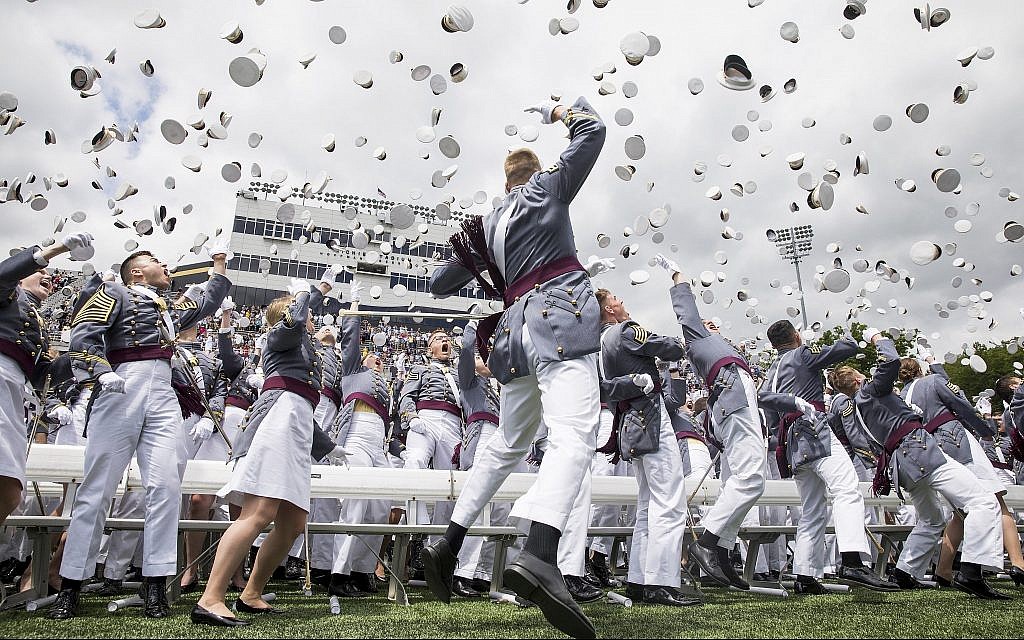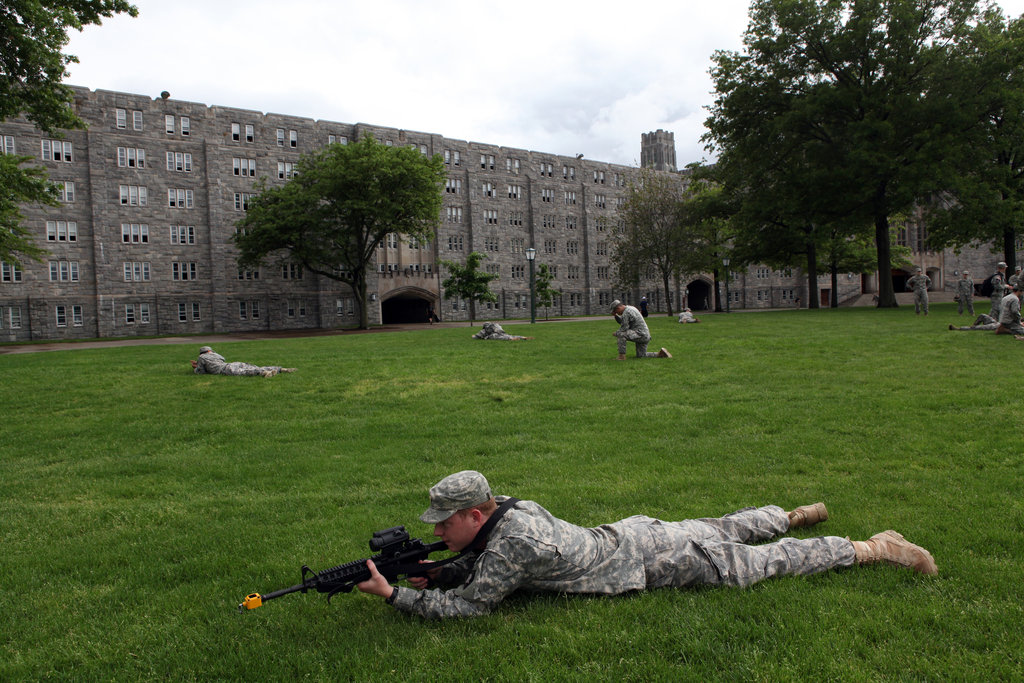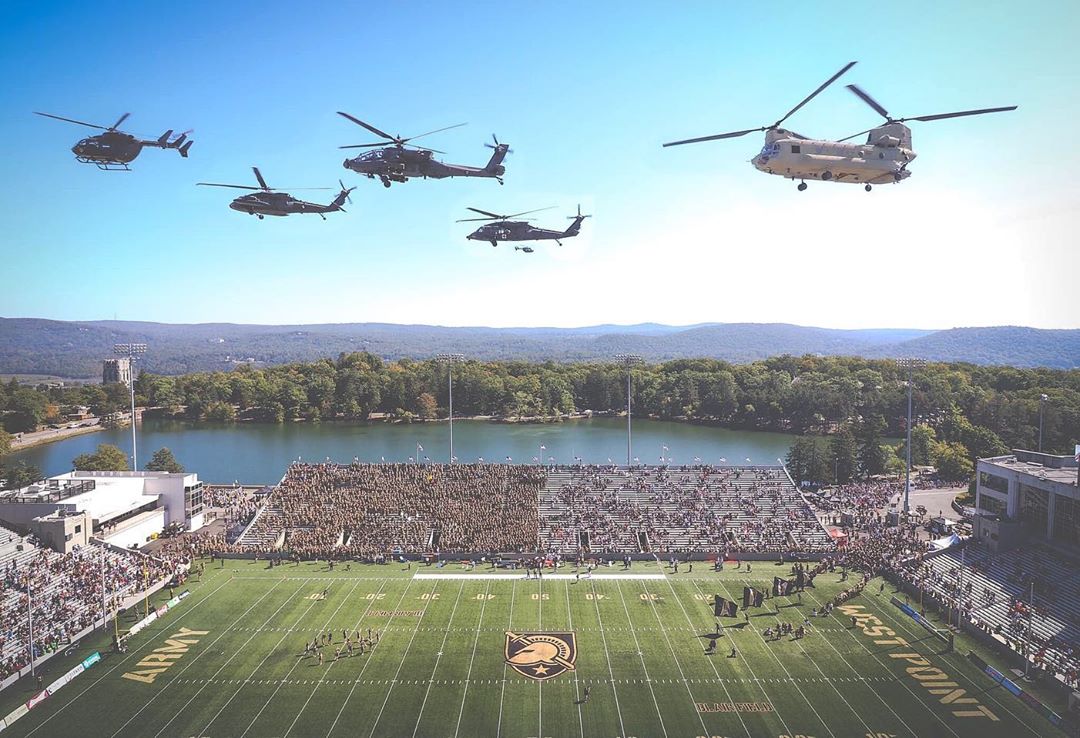Stuart Anderson-Davis examines a microcosm of America – the Military Academy at West Point

Imagine a university that covers every penny of your tuition, but also pays you a stipend of up to $525 per month. In addition, this institution boasts the proud record of 100% of its graduates walking straight into jobs – each with a guaranteed starting salary of $53,000, no less. Pretty good, right?
Now consider a university that requires every single student to be out of bed, immaculately dressed and lined up by 6am sharp. A place that demands every applicant completes a series of arduous physical tests before they let you in, then imposes a complete ban on consuming alcohol for the duration of your studies. Not a sports fan? Doesn’t matter; every weekend your attendance is compulsory at matches – standing tall, whatever the weather (and it gets seriously cold here). I’m guessing this place seems a less appealing prospect – especially if you spent your student days, like this author, in a lazy daze of hangovers, naps and good intentions gone awry.
As you’ve now probably deduced (and if you hadn’t, you’re not smart enough to get in here) I’m talking about one place. This is The United States Military Academy at West Point, New York: a prestigious institution formally founded in 1802 by President Thomas Jefferson, although the fortress of “West Point” was established by George Washington back in 1778 to train much-needed engineers for the Revolutionary War. Today, the 4,000 “Cadets” live and study on a 16,000 acre campus in the epically beautiful setting of the Hudson Valley, complete with picture-perfect views of the Hudson River straight out of a ‘Visit Norway’ fjord poster. West Point is just 50 miles north of New York City, but don’t even think about sneaking away for a night out.
As you would assume, entrance is extremely competitive – with a 9% acceptance rate and requirements ranging from endurance running and press ups to securing a prized personal letter of recommendation from your member of Congress. Indeed, the latter task is particularly “political” – with ambitious parents scrambling for every highly-sought citation. Traditionally this letter could come at a price, so to speak, although for legal reasons I should state that doesn’t happen anymore…
However, jumping through all these hoops is considered a small price to pay because of West Point’s first-rate record in churning out leaders and “public servants” of distinction. Every graduate commits to five years active service in the Army once they leave, but after that the sky is (not even) the limit. In addition to 18 astronauts, the Academy has produced two Presidents and countless generals, governors, senators and diplomats (including the current Secretary of State, Mike Pompeo).

Cadets have also thrived, perhaps more surprisingly, in Corporate America. West Point’s curriculum is not limited to practical military skills, but focuses on the broader task of “leadership training” – a skillset highly valued by companies up and down the land. Today, West Pointers can be found in boardrooms across every sector, including leading some of the nation’s most powerful businesses. In a land where the military plays a particularly visible role in daily life (from TV adverts for Armed Forces insurance to displays at practically every sporting event), West Point’s blend of courageous “service” and academic excellence remains a hugely attractive prospect for American businesses.
Indeed, what image could better fit the “strong leader” mould in a corporate environment that historically favours strong, white and male leaders – the traditional and still predominant West Point demographic? (Although it should be said that gender and racial diversity at West Point is increasing and in some areas the Academy already outpaces other US academic institutions, including the Ivy League).
But it’s not necessarily just the perception of leadership: studies have backed up the hunch that military training is useful in the boardroom, as well as on the battlefield. For example, research in 2016 found that US corporations led by CEOs with military backgrounds had outperformed the wider S&P 500, while those CEOs who graduated from West Point (including Alex Gorsky, Chairman and CEO of Johnson & Johnson) fared best of all. There’s a good reason why you find West Point alumni across the upper echelons of American society – from the White House to Wall Street.
A few weeks ago, I decided to check out this bastion of Alpha for myself – travelling to the Academy on a crisp, sunny autumn morning for the ultimate display of military machismo. In fact, it’s hard to think of a more quintessentially American day out than attending a military parade at West Point, followed by a “Football” match at the campus’ 38,000 seater Michie Stadium. The experience is epic. From all 4,000 Cadets marching in formation past the spectators (including the Secretary of State and his legion of Secret Service agents) to the daredevil acrobatics of West Point’s Cadet parachute squad, to the Army team running onto the field accompanied by full military fly-over. But it’s also apparent from the moment you arrive that succeeding in this place requires discipline and dedication way beyond that of your average fresher. Indeed, to say the West Point way of life “is not for everyone” is a considerable understatement.

Life is hardest for the “Plebes”, the unfortunate label given to first year Cadets, who learn the hard way about military life. For them, surviving the “challenging” and “stressful” Cadet Basic Training – a 6-week programme known as “Beast Barracks” – is just the start. Every day, Plebes act as human alarm clocks – waking early to sound the morning call for everyone else to form up for inspection by “zero six hundred hours”. At any point an older Cadet can require a Plebe to rattle off the full food menu for the week (all 4,000 eat simultaneously in a cavernous hall staffed by probably the best-drilled catering team in the world) or demand a verbal briefing on noteworthy articles from the morning’s New York Times. Things get (marginally) better as Cadets climb the ladder, but a full-on schedule of physical and mental tasks is demanded every day of a student’s four years at the Academy. There’s good reason Cadets are described as “the busiest students in the country”.
They may be the best behaved too. Central to the West Point experience is The Honor Code , which demands all students “conduct themselves with absolute integrity, both in word and deed”. Transgressions are punished by the Demerit system, which sees an erring Cadet undertake physical penitence for their sins. Typically, this means “walking the area”: a spectacle where individuals march back and forth across a courtyard in full dress uniform (complete with rifle and uncomfortable shoes) for a prescribed number of hours. Lower-level crimes like scuffed shoes or a missing button could result in 10 hours of walking. Something worse, like being caught with booze or nodding off during a televised speech by the President, and you will literally be marching for days.
So is this unique and unusual experience – plus the required military service after graduating – really worth the sacrifice? Sure, these men and women (largely) avoid the debt, liver damage and social media shame that’s the fate of other students. But when can they go a bit crazy, let loose and lie in? Ask yourself honestly, would you have put down your beer funnel or bong in return for iron-clad discipline and stellar career prospects?
As I said before, it’s not for everyone.




